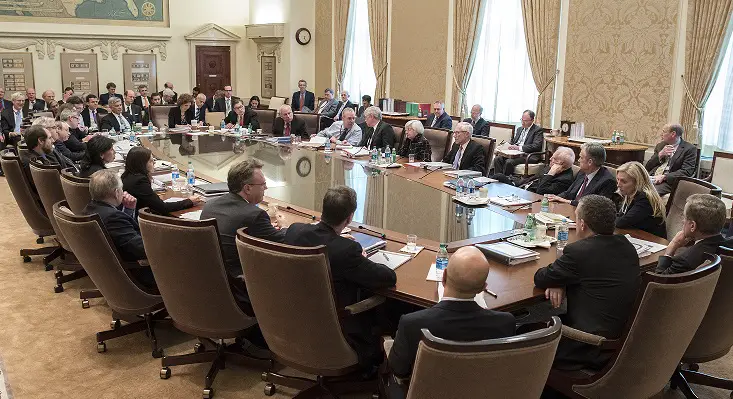A new Bloomberg survey of economists predicts the Federal Reserve will continue its hawkish policy at its next meeting November 1-2, and that this will lead to interest rates reaching 5% by next March, plunging the economy into a recession.
The survey predicts that the next Federal Open Market Committee meeting will produce a fourth consecutive 75 basis point hike to the benchmark Federal funds rate.
Economists cited this week’s US government data showing employment costs rising at a strong pace in the third quarter, as inflation continues to soar above the Fed’s 2% target rate, as evidence the Fed will not be putting the brakes on its monetary tightening any time soon.
The survey predicted December would produce a 50 basis point interest rate hike, followed by two 25 basis point hikes in the next two meetings next year. The forecast released at the September FOMC meeting predicted rates would rise to 4.4% this year, and 4.6% next year, before beginning to decline in 2024.
Economists are predicting a higher peak rate now after data showing higher than expected consumer price growth persisted over the last two months, especially in the core measures excluding food and energy.
James Knightley, chief international economist at ING Groep NV, said in one of the survey responses, “Inflation pressures remain intense and the Fed is set to hike by 75 basis points in November. We are currently forecasting a more muted 50 basis-point hike in December given a weakening economic and market backdrop,” though he said he felt most were predicting a 75 basis point hike as most likely. The survey found that while most felt there would be a 50 basis point hike, roughly one third disagreed, feeling that December would produce a 5th straight 75 basis point hike.
Anna Wong, Chief Economist at Bloomberg economics, wrote in response to the survey, “I think the most important thing to watch for is how Powell communicates the potential downshift in the pace of rate hikes. He will want to avoid giving the impression that a pivot is imminent, especially not when core inflation is clearly still going strong. He would be preparing for the markets for a 50 basis-point hike in December but which will also be accompanied with a dot plot, which shows 5% terminal rate.”
Most of the economists felt the most likely scenario will see the Fed over-tightening, and triggering adverse economic effects. Thomas Costerg, senior US economist at Pictet Wealth Management said, “Monetary-policy lags are still underestimated. The full effect of current tightening may not be felt until mid-2023. By then, it could be too late. The risk of a policy mistake is high.”
Joel Naroff, president of Naroff Economics LLC, said, “With the Fed facing the choice of either doing too much or too little, the members will likely opt to do too much.”
Most expected the Fed would continue to pare back its balance sheet, which began in June as it allowed the run off of maturing securities. Currently the Fed is reducing assets by as much as $1.1 trillion per year. Economists predict it will drop to $8.5 trillion by the end of 2022, and $6.7 trillion by December of 2024.
Most economist were predicting the first rate reduction would be a small drop that will occur in the second half of 2023.
The survey polled 40 economists and was performed between October 21st and October 26th.

